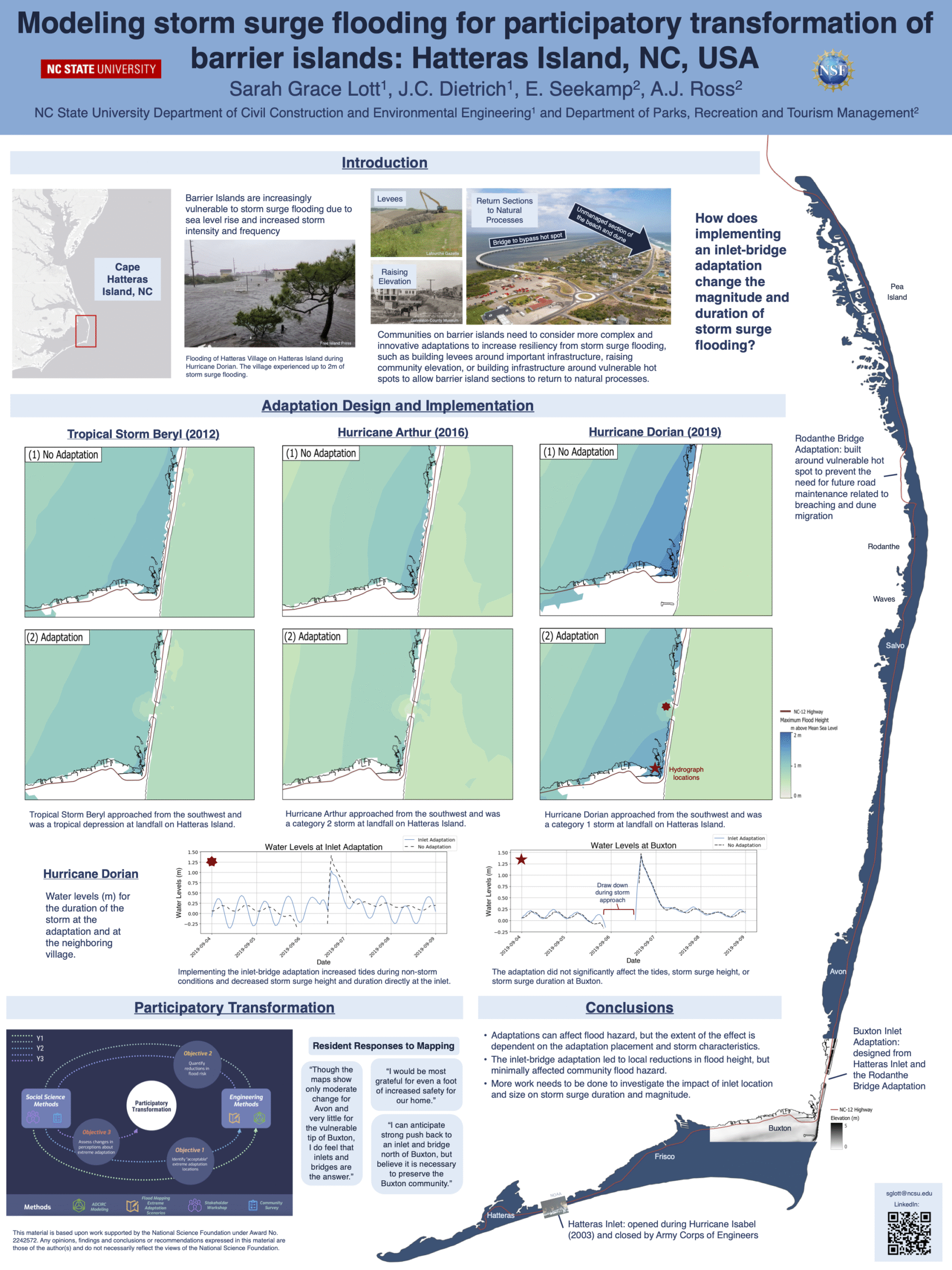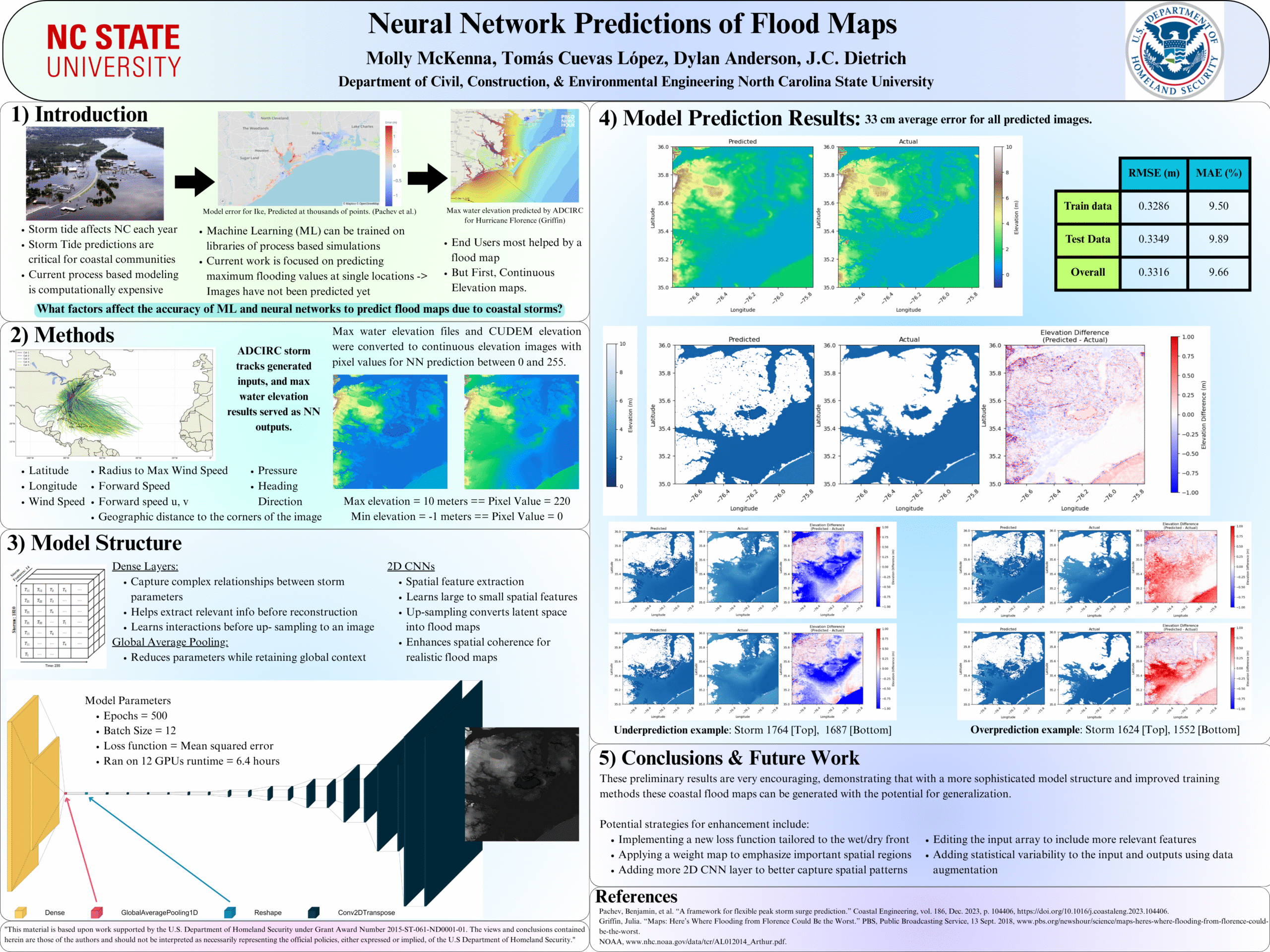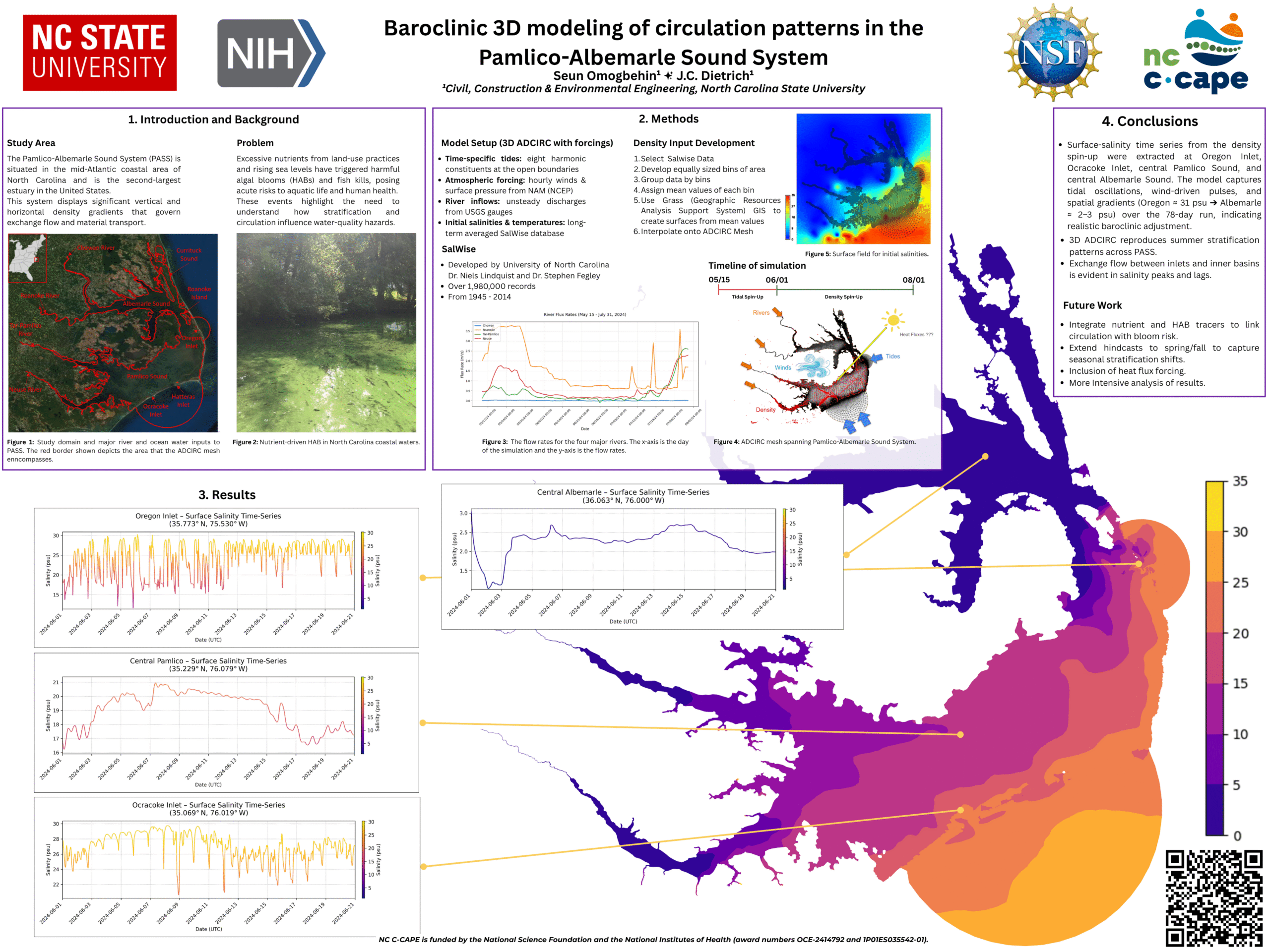Barrier-island communities face flooding due to rising sea levels and stronger storms, and typical adaptations (protect, accommodate, retreat) may not keep up with increasing risks. Communities are now considering extreme adaptations, such as allowing an island section to ‘return to nature’ by removing roadways and other infrastructure. But these extreme adaptations transform the natural processes of and the community’s relationship with barriers. The effects on flood risks at nearby communities are not well understood, and it is not clear whether communities will ‘welcome the water’ or reject it as opposing their sense of place. This Disaster Resilience Research Grant (DRRG) project explores participatory transformation of barriers. Stakeholders will provide insights on place meanings across the barrier island and how floods affect these places and their connections to the community. The project also quantifies how flooding at a natural island section may change the hazard at neighboring communities, and whether these locations can be selected to minimize the risks while maximizing community attachments. These activities provide a framework for participatory transformation, as well as advance technologies for flood risk modeling that can be expanded to improve disaster resilience for communities along the U.S. Gulf and Atlantic coasts. This research also supports an immersive experience for students to collaborate across engineering and social-science disciplines to tackle the challenges of climate change.
JC Dietrich, EL Seekamp. “Enhancing Coastal Resilience through Participatory Transformation of Barrier Islands.” National Science Foundation, Directorate for Engineering, Division of Civil, Mechanical and Manufacturing Innovation, Disaster Resilience Research Grants, 2024/01/01 to 2026/12/31, $398,891 (Dietrich: $199,117).







